In perpetuity
As I write this we’re approaching midsummer of one of the best years beekeeping I’ve had in a decade. In Fife we’ve had excellent weather, and consequently excellent nectar flows, for weeks. Queen mating has been very dependable. I’ve run out of supers twice and have been building frames like a man possessed.
I’m not complaining 😉 {{1}}
In a few short weeks it will be all over. The season won’t have ended, but this non-stop cycle of inspections, adding supers, building frames, splitting colonies, making up nucs, taking off laden supers, extracting and more inspections will be largely finished.
We’re in clover
Literally, as it’s been yielding really well recently.
I’ve written previously about The Goldilocks principle – not too much, not too little – and bees. As an individuals’ competence improves over successive seasons, colony numbers can quickly change from too few to too many.
A single production {{2}} colony in a good year should probably also be able to generate a nuc for overwintering and possibly a new queen for re-queening without significantly compromising honey production.
That’s certainly been the case this year. I’ve got a few colonies that produced nucs in May, were requeened (through vertical splits) in late June or early July and that have produced several supers of honey, either from spring or summer flows.
Or in a few cases, from both. And it’s not quite over yet 🙂
But, there’s always a but …
I said in the opening paragraph it’s an exceptional year. The ability to produce a surfeit of both bees and honey requires some skill, some luck and some good timing.
In a bad year, just getting one of the three – a new nuc, a new queen or a honey surplus – from a colony should be regarded as a major success.
How do you cope with problems encountered in these bad years?
Self-sufficiency
I’m a strong supporter of self-sufficiency in beekeeping. Although I’m not fundamentally opposed to purchasing queens or nucs, I do have concerns about importation of new virus strains and other ‘exotics’ that do or will threaten our beekeeping. However, buying in high quality bees for stock improvement is understandable, expensive at times and the foundation of at least some commercial (and amateur, but commercially viable) beekeeping.
What I’m far less keen on is purchasing bees – a significant proportion of which are imported – to compensate for lazy, slapdash or negligent beekeeping.
And there’s too much of that about … anyone who has been keeping bees successfully will have heard these types of comments:
- Surely I can get away with less frequent inspections? I always have six weeks sailing in May and June … but I do want to make my own honey and mead
- They all died from starvation sometime last year but I’ll buy some more in March from that online supplier of cheap bees (Bob’s Craptastic Nucs … Bees for the Truly Impatient)
- Varroa treatment? Nope, not in the last couple of years mate. I’ve never seen one of them Verona, er, Verruca thingies so I don’t think my bees are infected with them anyway
- I knocked off all the queen cells to stop them swarming in June and July. They just might be queenless. I know it’s early October but do you have a mated queen spare?
I’ve heard variants of all the above in the last few months.
In perpetuity
This stop-start beekeeping is not really beekeeping. I’ve discussed this in Principles and Practice extensively. I’ve called them beehadders before but perhaps the term ‘serial ex-beekeeper’ might be more accurate.
The reality is that, with a little skill, a little luck and just reasonable timing you can have bees in perpetuity … the real topic of this post.
In perpetuity meaning you are self-sufficient for stock and for spares.
You’re able to exploit the good years and survive the bad. You only need to buy in bees for stock improvement or to increase genetic diversity (which may be the same thing).
Once you’ve got bees, you’ve always got bees.
It’s a good position to be in. It gives you security to survive accidents, self-inflicted snafu’s and even the odd fubar {{3}}. You are no longer dependent upon the importer, the supplier or your mate in the local association to bail you out. It gives you confidence to try new things. It means you can cope with vagaries in the weather, forage availability or simple bad luck.
How is this nirvana-like state of beekeeping self-sufficiency achieved?
I think it can be distilled to just two things – one is easy, the other slightly more challenging.
Firstly, you need to maintain a minimum of two hives. Secondly, you need to develop an appreciation of how the colony develops and understand when interventions and manipulations are most likely to be successful.
One is not enough
I’ve discussed the importance of a second hive previously. With one hive, beekeeping errors (or just plain bad luck) that result in a queenless, broodless and eggless colony might well be a catastrophe.
With two hives, you can simply take a frame of eggs from the second colony and voila, they’ll raise a new queen and your imminent categorisation as an ex-beekeeper is postponed.
The benefits of two colonies far outweigh the expense of the additional equipment and time taken to manage them. In a good year you’ll get twice as much honey to impress your friends and neighbours at Christmas, or to sell in the village fete. In a bad year, the ability to unite a weak colony headed by a failing queen in late September, might mean the difference between being a beekeeper and being an ex-beekeeper the following Spring.
Maintaining two colonies in the same apiary significantly increases your chances of having bees in perpetuity.
The art of the probable {{4}}
Beekeeping isn’t really very difficult. You provide the colony with somewhere to live. You give them sufficient extra space to dissuade them from swarming (swarm prevention), or intervene in a timely manner to stop them swarming (swarm control). If you harvest some or all of the honey you provide them with more than they need of an alternative source of sugar(s) at the right time. Finally, you monitor and control the pathogens that afflict them and apply appropriate treatments, at the right time, to minimise their impact.
As you can see, timing is important. Do things at the right time and they work … at the wrong time they don’t.
Timing is also important in terms of the frequency of inspections (which I’ve briefly discussed before, so won’t repeat here), and in the manipulations of the colony.
These colony manipulations include – but aren’t restricted to – providing them space to expand, spreading the brood nest, making nucs, rearing queens or at least getting queens mated, adding supers, uniting weak colonies and feeding them up for the winter.
Again, if you do the manipulations at the right time they will probably work. Hence the ‘art of the probable’.
The time is right
For many of these manipulations, the ‘right time’ essentially depends upon the development of the colony and weather. And, of course, colony development is itself very much influenced by the weather.
Consider queen mating. Of the various manipulations listed above, this is one upon which the future viability of the colony is absolutely dependent.
Queen mating usually occurs mid-afternoon during dry, preferably sunny weather, on days with relatively light winds and temperatures of at least 18°C. Therefore if there’s a mature virgin queen in your hive {{5}}, the weather is suitable and there are drones flying, she’ll probably get mated.
Days like this occur pretty dependably in late May and June. It’s no coincidence that this is the peak swarming season.
Conversely, if through carelessness or neglect your colony goes queenless in late September, the probability of getting a warm, dry, calm afternoon are much less. It’s therefore less probable (and potentially highly improbable) that the new queen will get mated.
That’s not to say it won’t happen … it might, but it is less probable {{6}}.
Beekeeping nirvana
In re-reading this post I feel as though I’ve skirted around the core of the issue, without satisfactorily tackling it.
Having bees in perpetuity is readily achievable if you have a backup hive and you understand how colony development and the weather determines what you can and cannot do to the colony during the season {{7}}.
Having two hives but inadvertently damaging both queens in March during heavy-handed inspections will not provide bees in perpetuity.
Conversely, irrespective of your best efforts, a single terminally broodless and queenless colony at the peak of the swarming season cannot magically create a new queen … meaning you’re about to become an ex-beekeeper.
I’ve used queen mating as an example because it’s a binary event … she’s mated successfully or she’s not, and colony survival absolutely depends upon it.
However, the timing of many of the other manipulations can also influence the strength, health and robustness of the colony. Providing too much space in cold weather delays expansion as there are too few bees to keep the brood warm. Trying to feed syrup very late in the season may mean it’s too cold for them to access the feeder, leading to starvation. Finally, using the wrong miticide at the wrong time is a guaranteed way to ensure more mites survive to damage the colony in the future.
Learn to do the right thing at the right time … to both your colonies. The recipe to having bees in perpetuity.
Colophon
In (for or to) perpetuity means “for all time, for ever; for an unlimited or indefinitely long period” and has origins in Latin and French with English usage dating back to the early 15th Century.
‘Unlimited or indefinitely long’ could also refer to the length of this post or the delay to my flight last Sunday. You can thank EasyJet for providing me with more than ample time to write this magnum opus.
Or write and complain for the very same reason 😉
{{1}}: Actually … as I wrote that I was stuck in another airport, for another delayed and subsequently cancelled flight. The weather outside was fabulous, I should have been sweating in a beesuit making up nucs for overwintering. Instead, my 4 hour return journey turned into a 15 hour nightmare of delays, alternative flights (to a different airport altogether) and culminated in a four hour taxi ride that finally got me home at 2am … I was not a happy bunny.
Thank you, EasyJet.
{{2}}: Honey production that is …
{{3}}: North American military slang for “Situation normal all fouled up” and “Fouled up beyond all recognition” respectively, both dating back to the Second World War. Stronger variants of ‘fouled’ are sometimes substituted.
{{4}}: This is a bastardised version of the quote by Otto von Bismark that “Politics is the art of the possible“, meaning Realpolitic, pragmatism rather than ideology
{{5}}: Virgins need to mature for a few days post-emergence before mating.
{{6}}: In addition, late in the season there are far fewer drones available for mating. Hives chuck them out before winter. Therefore, although it may be an Indian summer and apparently ideal for queen matings, there may insufficient drones for her to get properly mated (on average she will mate with ~16) meaning she might still fail in the winter.
{{7}}: Or perhaps that would be better written as should or should not do … you can do anything you want, including things that you should not.
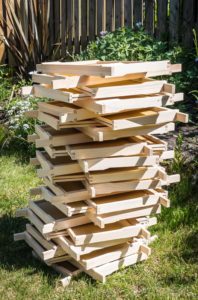
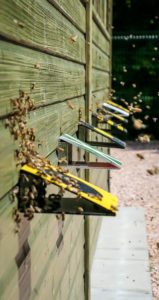

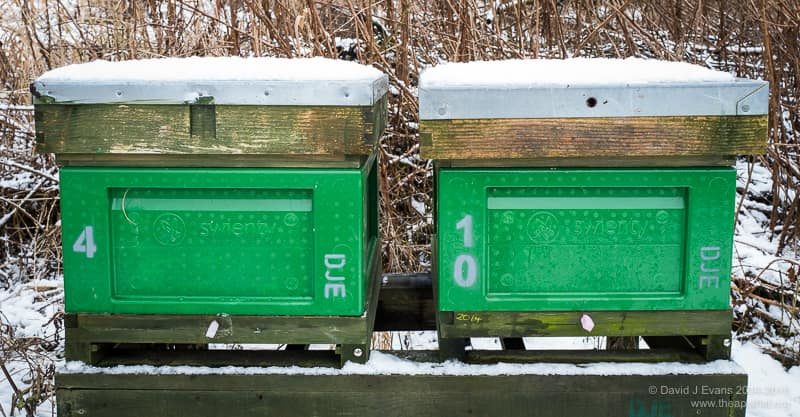
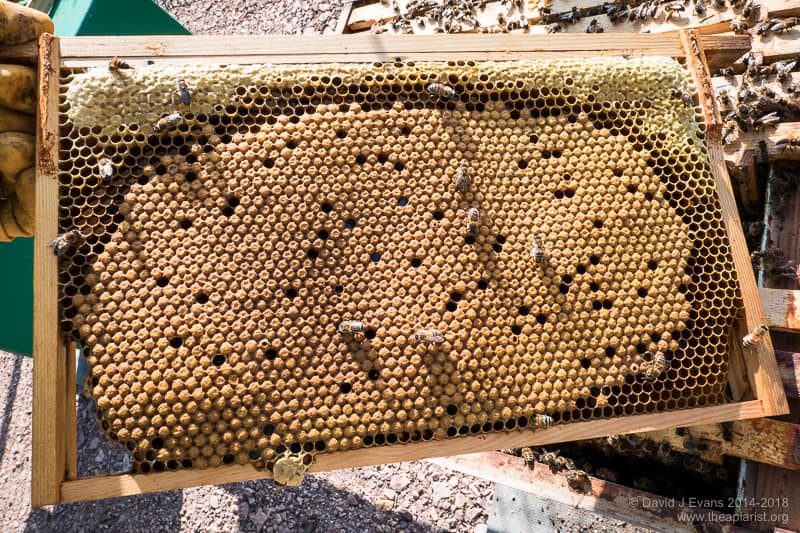
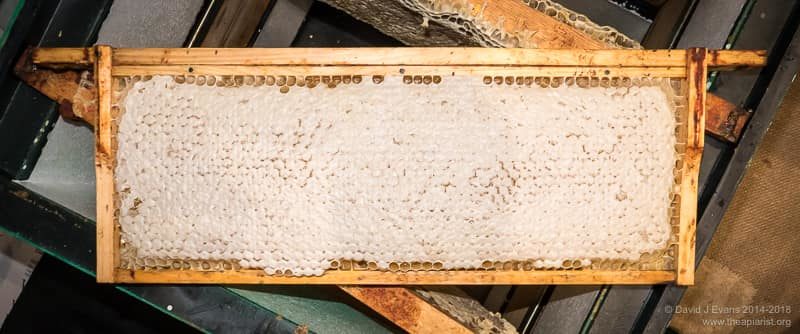
Join the discussion ...